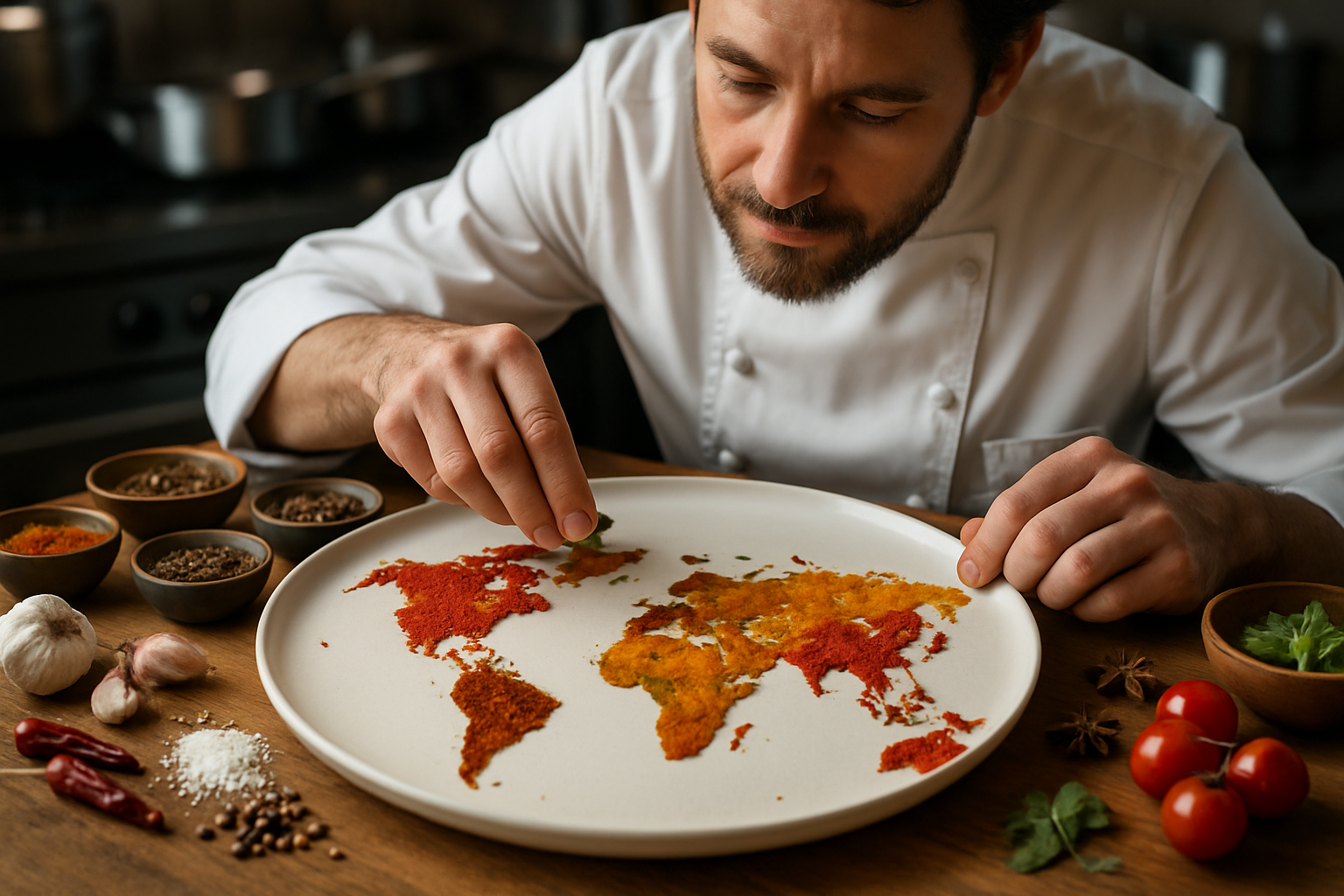Culinary Alchemy: Transforming Everyday Ingredients
Discover the magic of kitchen transformation as we delve into the art of culinary alchemy. From humble beginnings to extraordinary creations, this journey explores innovative techniques that elevate ordinary ingredients into extraordinary dishes. Prepare to unlock new flavors, textures, and presentations that will revolutionize your cooking and impress even the most discerning palates.

Texture Wizardry: From Solid to Foam
One of the most exciting aspects of culinary alchemy is the ability to completely transform the texture of ingredients. Molecular gastronomy techniques have opened up a world of possibilities, allowing chefs to turn liquids into foams, solids into gels, and powders into crispy sheets. For example, the process of spherification uses sodium alginate and calcium chloride to encapsulate liquids in a thin membrane, creating bursts of flavor that pop in the mouth. This technique can turn a simple fruit juice into elegant pearls that garnish desserts or cocktails. At home, even basic tools like immersion blenders can be used to create light, airy foams from vegetables or fruits, adding an unexpected element to familiar dishes.
Color Play: Natural Dyes and Edible Paints
Visual appeal is a crucial component of culinary alchemy, and innovative chefs are finding new ways to add vibrant colors to their creations using natural ingredients. Beetroot powder can transform a pale risotto into a striking fuchsia dish, while butterfly pea flower tea changes from blue to purple with the addition of lemon juice. These natural dyes not only add visual interest but can also introduce subtle flavor notes. Edible paints made from fruit and vegetable purees allow for artistic plating techniques, turning a simple white plate into a canvas for culinary expression. By experimenting with these natural colorants, home cooks can create visually stunning dishes that are as beautiful as they are delicious.
Flavor Infusion: Beyond the Basics
Infusion techniques have long been used in cooking, but modern culinary alchemists are taking this concept to new heights. Rapid infusion using pressurized containers can imbue spirits with complex flavors in minutes rather than weeks. Sous vide cooking allows for precise temperature control, enabling the infusion of delicate flavors into meats and vegetables without overcooking. Even simple techniques like cold brewing can extract unique flavor profiles from ingredients like coffee or tea. By thinking beyond traditional infusion methods, cooks can create custom flavor combinations that elevate everyday ingredients. Imagine a vodka infused with the essence of fresh strawberries and basil, or olive oil that carries the subtle notes of truffles and garlic.
Preservation and Fermentation: Time as an Ingredient
The alchemy of time plays a crucial role in transforming flavors and textures. Modern preservation techniques go beyond simple canning or pickling, exploring how controlled aging can develop complex flavors. Dry-aging meat concentrates its flavor and tenderizes the texture, while fermenting vegetables creates probiotic-rich foods with unique tangy profiles. Even simple ingredients like garlic can be transformed through careful aging, resulting in black garlic with a sweet, molasses-like flavor. By harnessing the power of time and controlled environments, home cooks can create ingredients with depth and complexity that far surpass their original forms.
Culinary Alchemy Tips & Facts
• Use a coffee grinder to turn dried mushrooms into umami-rich powder for seasoning.
• Freeze fresh herbs in olive oil to preserve their flavor and create instant flavor bombs for cooking.
• Experiment with different types of salt to add complexity to your dishes – try smoked salt or pink Himalayan.
• Use a smoking gun to add a smoky flavor to foods without a grill or smoker.
• Dehydrate fruit slices to create colorful, flavorful garnishes for cocktails and desserts.
• Try using liquid nitrogen to instantly freeze and shatter herbs for a dramatic garnish.
In conclusion, culinary alchemy opens up a world of possibilities for transforming everyday ingredients into extraordinary culinary experiences. By embracing scientific principles, innovative techniques, and a spirit of experimentation, home cooks and professional chefs alike can push the boundaries of what’s possible in the kitchen. The next time you step into your culinary laboratory, remember that with a little imagination and the right techniques, you have the power to turn the ordinary into the extraordinary. Let the magic of culinary alchemy inspire your next creation and surprise your taste buds with unexpected flavors, textures, and presentations.





